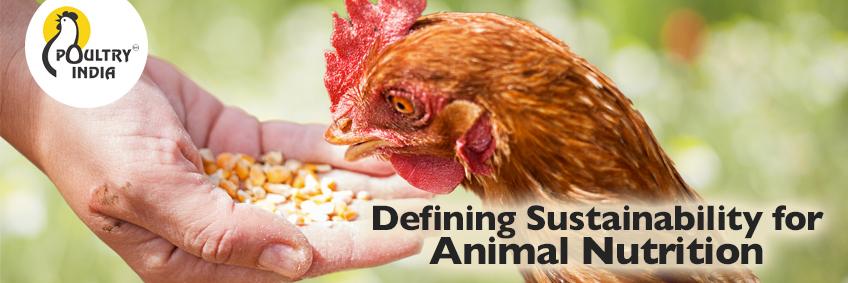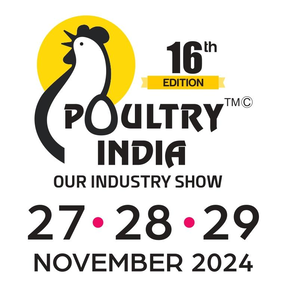Defining Sustainability for Animal Nutrition

Sustainability – definition and challenge for livestock
The United Nations Brundtland commission in its 1987 report defined sustainability as “meeting the needs of the present without compromising the ability of future generations to meet their own needs”.
At a fundamental level impact of human activities are now seen in harmful changes to the global geochemical cycles that are critical for life on earth and thus the elementary pillars of the ecological dimension of sustainability. They are the nitrogen cycle, the water cycle, the carbon cycle and the oxygen cycle. To achieve global sustainability, management of these cycles at all levels is essential. Agricultural livestock farms and livestock operations, the most important and most frequently mentioned critical challenges from the market (consumers, retailers), the general public (media, non governmental organisations (NGOs), and politics (regulatory authorities) are the impact of livestock on the different elements of the ecological footprint like climate change, land use, land and soil degradation, water footprint and biodiversity as well as the social elements food saftety and security, animal welfare and workforce health and safety. With regard to future food security, the food-feed competition in the longer run will become a central critical point in the social/ethical dimension of sustainability, especially for monogastric species as they directly compete with humans for feed or food resources (Garnett 2011, Nijdam et al. 2012). FAO report “Livestock’s long shadow” (Steinfeld et al. 2006) stated, that the global animal industry contributed more than traffic to global warming, i.e. 18% of the global warming potential (GWP) expressed in CO2-equivalents. The livestock sector must improve its environmental performance one one hand, but can play a key role in mitigating climate change through adoption of improved technologies. To do this, feed conversion efficacy and feed quality are key tools to reduce greenhouse gas emissions. The most recent publication (Gerber et al.2013) points out specific mitigation opportunities in tackling climate change through livestock like improving production efficiency, improving breeding and animal health, using manure management practices to recycle and recover nutrients and energy contained in manure, sourcing low emission inputs such as feed and use of feed additives like aminoacids, enzymes and gut modulating products such as pre- and probiotics, organic acids and phytobiotics.
The results of the lately published SFIS study show the reduction potential of amino acids and phytase for excretion of N and P. In the case for typical conditions in Latin America, N excretion was reduced for poultry by almost 70%, P-excretion by more than 50% compared to feeding conditions without thes additives.
Similar to other species, a large part of the dietary nitrogen intake is not retained by poultry but is excreted into the environment. Using standard diets, only 45% of dietary nitrogen intake is retained by the broiler body, and the rest is excreted into the litter with about 40% converted to ammonia leading to a deterioration in litter quality and thus a deterioration in health status of the birds. A high CP level in the feed is moreover reported as a predisposing factor for necrotic enteritis. An excess of protein would also lead to a physiological need for an increase in water consumption to achieve efficient nitrogen excretion. As a consequence, high CP diets lead to higher levels of nitrogen and water excretion compared with low CP diets, leading to deterioration in litter quality and the birds’ environment.Reducing dietary CP levels is thus a key solution to control nitrogen excretion and ammonia emission in poultry husbandry.
The third dimension in feed formulation
Optimizing the nutritional and economic aspects of feed formulation and feeding concepts is established best practice of all advanced premixers, compounders and integrated feed companies. However, the ecological aspect has been given only low consideration due to missing tools and low legal and public pressure. The latter aspect most likely is going to change quickly in most regions, and in parallel more and more software tools are available for free from consulting services (Holos 2015), universities (FeedPrint 2015) or feed additive suppliers (Evonik 2015a). AMINOFootprint® 2.0 is a web-based app which can be used with desktop and laptop PCs or tablets. It focuses on calculation the GWP, EP and AP values of individual compound feed types for pig or poultry with 1mt of feed or 1ton of live-weightas the functional unit as well as whole feeding cycles with the feed conversion ratio (FCR) and the relative share of the single feed stages (i.e. starter, grower, finisher) as variables. The database consists of certified feed ingredients from the main production regions of the world (GaBi 2014) and covers all relevant stages of feed ingredient production. The user can further simulate different transport and supply chain scenarios and see their environmental impact. The system boundaries are cradle to gate, so not including logistics of finished feed, meat processing and the retailing phase. The user can finally compare the environmental impact categories of a standard feed with those of a ecologically optimized feeding concept. This is a net comparison not only taking into account the effects of the different feed composition, but including the effects of the NH3 emissions in the animal house and during manure storage and field application as well as the nitrous oxide (N2O) and nitrate (NO3-) emissions during manure spreading. As the nitrogen content in the feed is directly but inversely related to these emissions occuring in the stable and during manure storage and application, an efficient approach to reducing emissions is the reduction of the protein content in the diet. It is generally accepted that reducing the protein level in a diet reduces the nitrogen content in the manure by 10%, the ammonia emission into the ambient air by 10%, the water consumption of the animals by 3% and the manure volume by 5% (Peisker et al 2009). Although poultry products like eggs and broiler meat have a much lower water footprint of only 29 and 34 liter/g proteinthan other meats like porc, sheep or beef (Mekonnen and Hoekstra 2012) is still about double as highthan for cereals or pulses. Hence, every effort to reduce the water footprint of poultry production even by nutritional means is important to save this most critical resource and to limit competition between feed and food for longterm fod security. As up to 4% of the N in fertilizer or manure can be omitted as N2O (Woitowitz 2007), reducing N-content in manure trough low protein diets contributes to reduced N2O emissions, the most potent green hous gas, which is 300 times as potent as CO2 and which is formed by bacterial nitrification and denitrification processes in soil mainly from nitrate.
Low emission farm (LEF)
To reach the full potential of mitigating the environmental impact of livestock production several best practises must be combined (Gerber et al. 2013). These best practices are optimized breeding and husbandry management for best performance and health, efficient nutrient management to reduce feed resources consumption and nutrient excretion, waste management to reduce waste volumes and finally emission management to reduce environmental impacts. All three are followed by efficient energy use and nutrient recycling to close nutrient cycles.The combination of all these elements leads to more efficient and sustainable reduction of emissions and waste.It also creates new business opportunities and thus increases profitability in animal production and could be abbreviated as LEF or low emission farming.
Depending on the infrastructure, co-ferments like fat-rich slaughter offals or starch containing sources like flour- or feed mill offall could improve the methane yield in the biogas plant. The raw biogas contains about 60% CH4 gas as the main energy containing element which can be transformed in a CHP (combined heat and power plant) to heat and electricity being used on the farm or being sold to the public. Untreated manure, the so called digestate or fermentation rest out of the anaerobic digester is used as valuable organic fertilizer with nitrogen and phosphorus as the most valuable nutrients. However, again depending of the given set-up of the farm (cash-crop fields available or not in close distance) and the local fertilizer regulations, there might be either a nitrogen or phosporus surplus or deficiency.
On larger farms, biogas systems may require large initial capital investments and their economic feasibility must be shown with longer term business case calculations. To proof the ecological benefit of the LEF, more data based on the LCA method need to be created. For individual elements (i.e nutrient-, emission-, waste- and fertilizer management). The mitigation potential of the nutrient management by lowering protein has been discussed above. First still provisional results of an LCA evaluation simulating Latin Americanbroiler feeding conditions(Haasken et al. 2015, Fig.3) show that increasing feed efficiency and digestibility through advanced nutrient management reduces significantly the impact of feed, farm application and consequently also manure storage due to reduced volumes, and yielded in a reduction of GWPby about 42% compared to the base case without amino acid supplementation.A further16 % reduction of GWP is the result of implementing emission management via biogas production due to lower CH4 losses during manure storing and CO2 credits for replacing fossil energy. A small further reduction of the GWP by about 8% was possible by the biogas upgrading to bio methane and giving credits for replacing diesel with biofuel. Comparable results are expected for the other impact categories AP and EP.
LCA calculations should be done with an even wider scope to integrate also best practice for digestate storage and field application which seem to be advantageous compared to untreated manure (Moeller 2015). Finally, the mitigation potential producing fertilizers as described above in an integrated LEF concept by nutrient recycling using renewable energy produced by a biogas plant fed with manure as feedstock will be researched with the comparable LCA method.
Conclusion and outlook
Livestock must improve its environmental footprint given the fact its resource consumption and contribution to GWP, AP and EP is substantial (Steinfeld et al. 2006, Gerber et al. 2013). Advanced nutrition concepts applying the latest scientific knowledge offer great improvement potential in lowering the ecological nutrient management performance compared to current industrial practice. Combining best practice with some or all of the described further elements (anaerobic biogas production using manure as feedstock, biogas upgrading, digestate treatment and best application practices of digestate on the field or even nutrient recycling producing different types of fertilizers) under the LEF concept results in even a higher improvement potential.Environmental savings as a license to save-guard current business and enable future growthof livestock farms under more strict environmental regulations will predominate renewable energy production under subsidize schemes. The economic and ecological feasibility of this concept is currently being evaluated in an Evonik project analyzing the return of investment and calculating the ecological benefit using the LCA methodology for different scenarios combining the individual modules of the LEF concept.
The following recommendations could be given to policy makers and regulatory authorities who want to speed up the development toward sustainable poultry operations:
Assess the full environmental costs of current poultry production systems which today are externalized
costs of cleaning up environmental pollution (water, soil, air), including manure and agrochemical runoff and contamination, and livelihood losses that result
costs associated with greenhouse gas emissions from all stages of industrial poultry production
loss of manure as a source of nutrients and organic matter on croplands, and increased costs and environmental impact of manufacturing and using commercial fertilizers
Exploit the full potential of lowering the protein content in poultry feed to reduce N-emissions
biggest potential in layer and breeder feed and in grower 2 and broiler finisher
formulation based on SID combined with ideal protein profile
Optimize use of enzymes (NSP, proteases, mannase) to increase feed resource efficiency in using more alternative or new feed raw materials
Make use of phytase obligatory to lower eutrophication and to preserve mineral phosphate stocks
Use organic trace mineral sources, especially for zinc and copper
Stop using AGPs by a holistic approach of using alternative AGP-replacing additives combining with best management practices
Require large-scale commercial farms and integrated meat complexes to build biogas plants with manure as main feedstock
to produce renewable energy (electricity, heat or fuel) based on offal and waste
to better close nutrient cycles (N,P, organic content in soils)
to lower GHG, AP, EP
Source: http://benisonmedia.com/









.jpg)



